Schema Markup for Local Businesses
Key Takeaways
- Schema markup helps search engines understand your web content better, increasing visibility on Google's local map pack.
- User intent is crucial for local SEO, and schema markup provides detailed context about your business to help search engines display engaging information in search results.
- Implementing schema markup allows your web pages to rank for rich results, enhancing the SERP appearance with additional information such as star ratings, reviews, and product details.
Schema markup is HTML code (or structured data) added to your web page or website to help search engines understand its content and context. With this code, search engine bots can understand the relationship between different elements on your web page, such as events, reviews, products, opening hours, places, and other relevant information.
This increases your chances of showing up on Google’s local map pack as a rich snippet, like this:
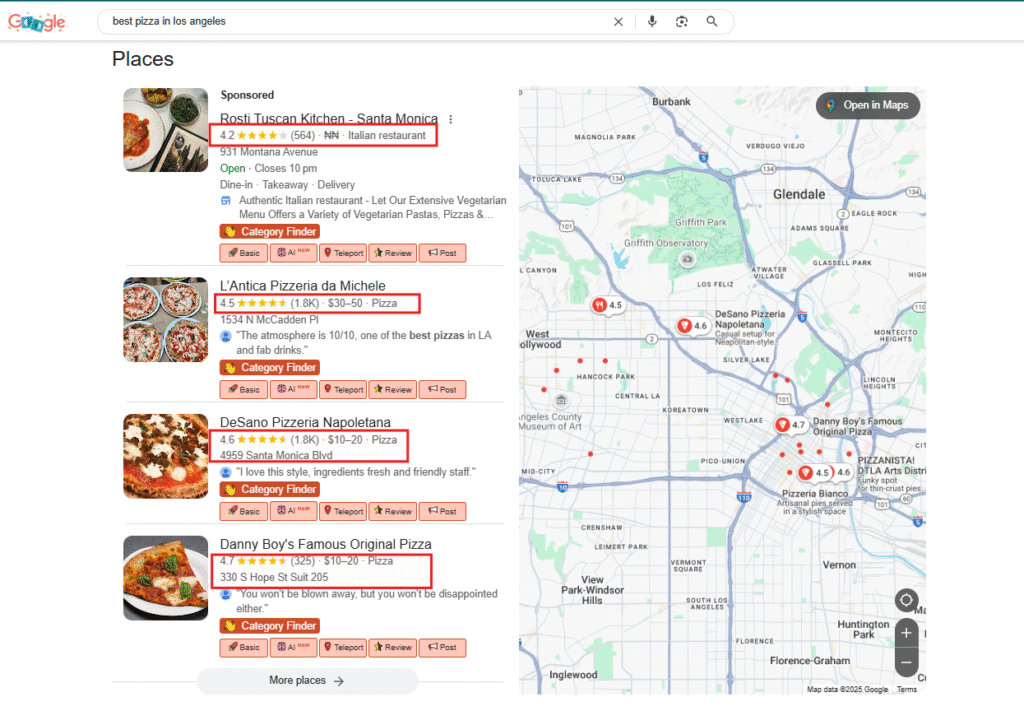
Why does it matter for local SEO?
Local SEO is heavily focused on user intent. With schema markup, you can give search engines more context about your business location, the reviews you’ve received, services offered, opening hours, etc. This way, users will find you easily. Search engines will also be able to display your web page in the search results with detailed, engaging information that helps searchers learn more about your business before they click on your page.
Google’s John Mueller confirms it in this tweet:
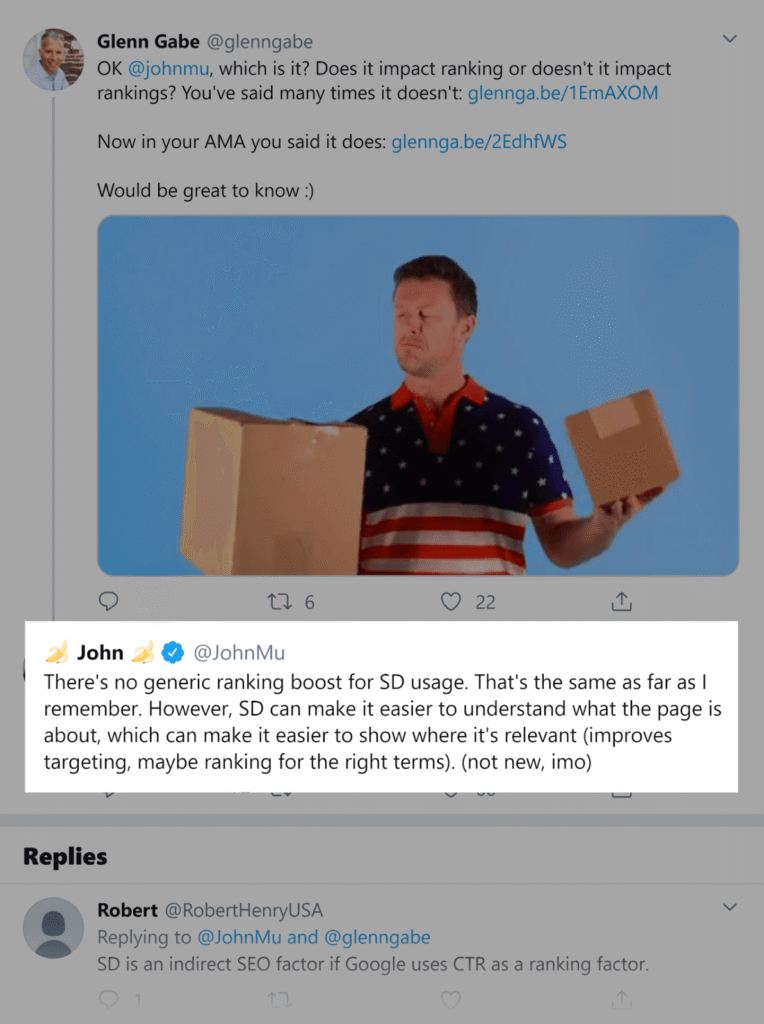
Other benefits are:
- Allows you to rank for rich results:
Schema markup allows your web pages to appear as rich results, also called rich snippets. These are a SERP (search engine result pages) feature that contains additional information such as star ratings, product pages, reviews, FAQ, etc., depending on the schema implemented on the page.
Here’s an example of rich results for the keyword “iPhone 16 Pro Max.”

As you can see, att.com and bestbuy.com have extra details on their web pages (star rating, price range, and information stating that it’s in stock). These make their listings more helpful and attractive, and users can click through to browse more (and buy the iPhone) since they’re certain that the webpage contains the information they need.
- Help you build a rich content knowledge graph online
Schema markup helps you tell search engines exactly what your business is about (your services, location, hours, and available reviews). By connecting all this information, you build a knowledge graph: a map of your business on the web that Google can read, trust, and use to show richer results (like a full business profile or local pack listing).
The more connected and complete it is, the easier it is for Google to rank you above less-optimized competitors.
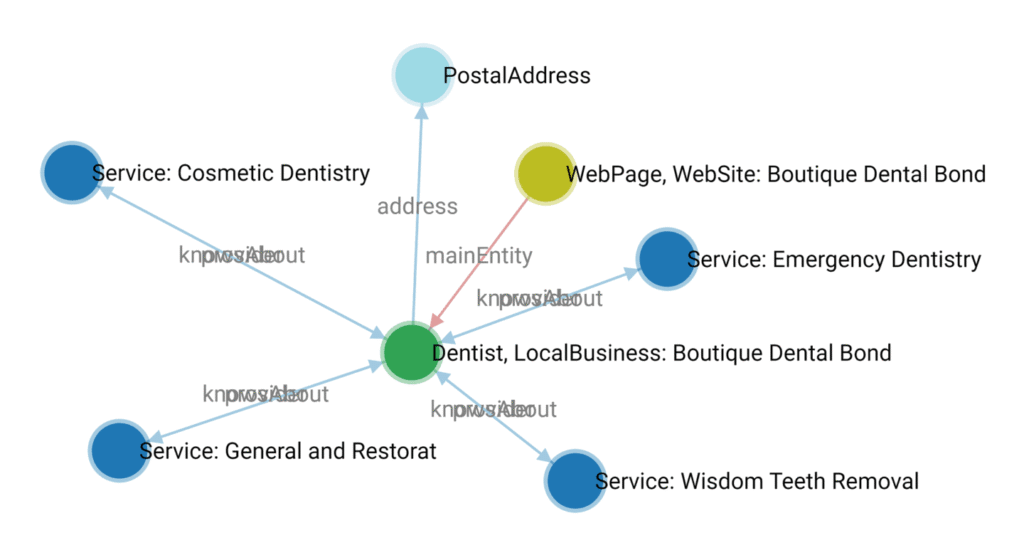
Martha Van Barkel, the CEO of schema.org, adds that:
“When you implement Schema Markup on a page, you use the Schema.org vocabulary to make a series of statements describing the entity. The Schema.org type categorizes the entity, while the Schema.org property describes the entity.
For example, a physician’s detail page might include information about the physician’s name, medical specialty, who they work for, the hospital or medical clinic they work at, the medical services they provide, and the geographical area they serve. You can use Schema Markup to describe these aspects of the entity and express it as a graph with specific connections.
This helps search engines understand details about the physician to provide answers to a detailed query like [find me a cardiologist near me who can perform an EKG and has an appointment available in the next 2 days].”
- Increases your click-through rate:
Schema markup allows search engines to show more details about your page, which makes it more attractive than the standard search result. This difference can attract searchers and compel them to click through.
Some evidence? According to Google:
- Rotten Tomatoes added structured data to 100,000 pages and saw a 25% higher CTR in pages with schema markup than those without.
- Rakuten found that users spend 1.5x more time on pages that have structured data than those without.
- The Food Network converted 80% of its pages and saw a 35% increase in visits.
All these point to the fact that schema markup increases CTR.
- Optimizes your listing for voice searches
Voice search is becoming the new normal for user searches because of technologies like Siri and Alexa. Users can now ask questions and get specific responses using Google or other search engines.
According to research:
- 20% of searches on Google App are by voice (Google).
- 27% of the netizens use voice search on mobile (Google).
- 30% of internet users aged 16 – 64 use voice assistants (Backlinko).
- 46% of users perform voice searches to find local information online (Invoca).
Voice searches are often conversational and question-based. They could be “Hey Siri, where is the best bakery near me?” or “Which dentist near me is open?”
Schema markup can structure your website’s content to match these natural language queries. For example, with markups like FAQPage, HowTo, and LocalBusiness, search engines and voice assistants can understand your content and extract specific answers to match user queries.
Simply put, schema makes your content easier for machines to understand and serve direct answers to voice queries.
Types of Local SEO Schema
Here are some types of local SEO schema:
1. LocalBusiness schema
LocalBusiness schema is a type of markup/structured data that tells Google about your local business. This includes important information such as the location, working hours, price range, contact information, and ratings.
So, whenever users search for a nearby business, for example, “the best restaurants in 7th avenue nyc,” they can see all important details right on the search results and book an appointment immediately:
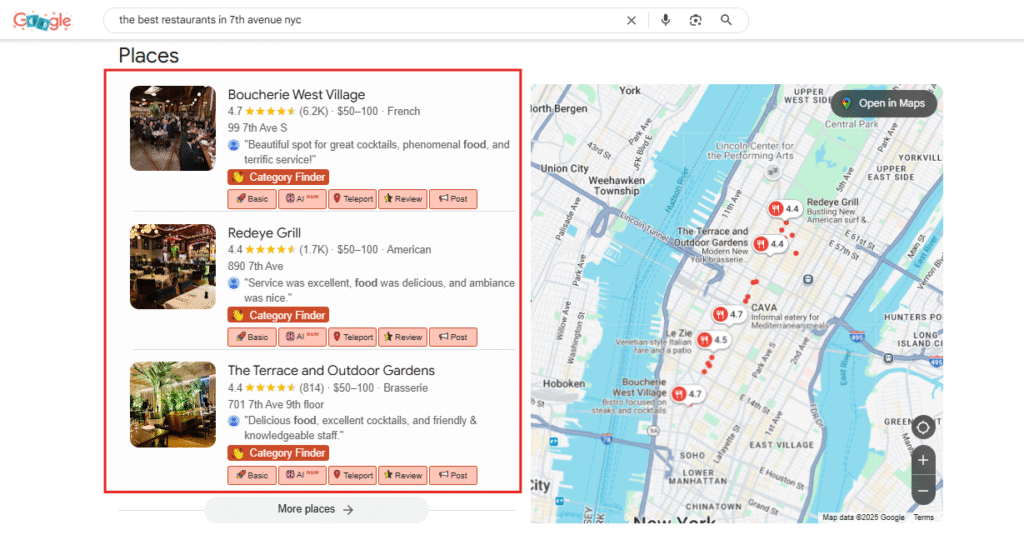
You can also add LocalBusiness structured data to your Google Business Profile listing to increase your chances of appearing on Google Maps, like the example below. These businesses can be found on the map because they’re optimized for Google Map searches as well:
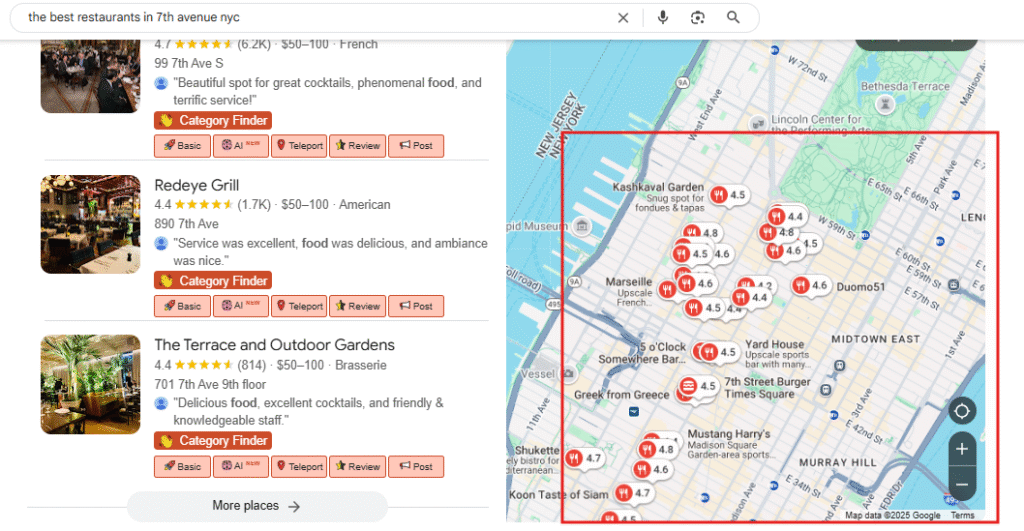
Or markup specific pages on your website, like this:
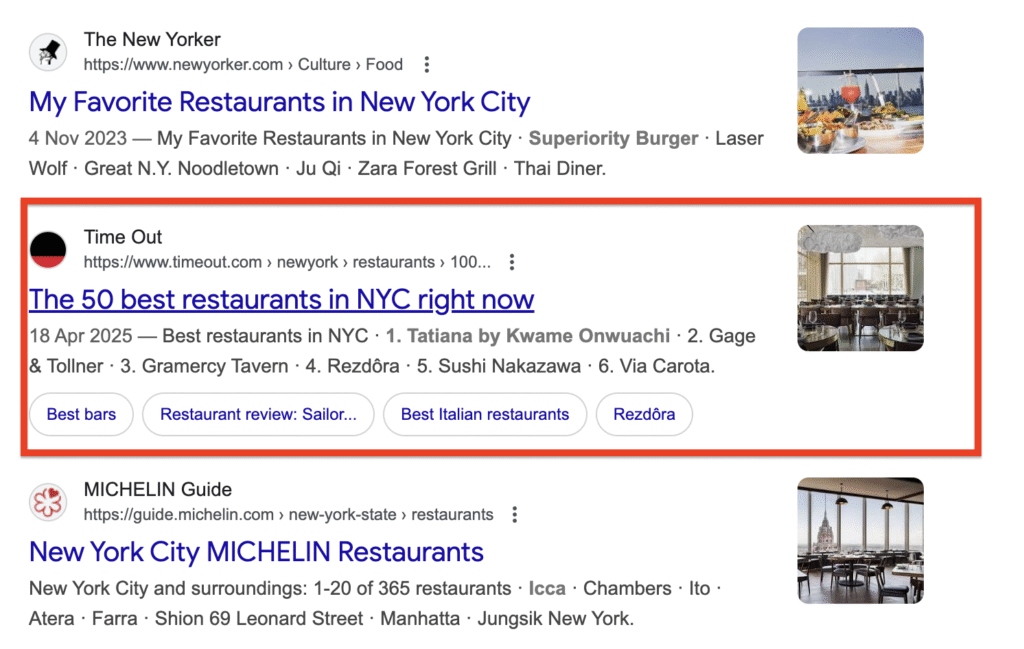
2. FAQ Schema
The FAQ schema is structured data that marks up a webpage containing questions and answers. It can be used to mark up all question-led pages on your website, including the FAQs on your landing pages, blog posts, and even GBP. This:
- Increases your chances of ranking on Google AI Overviews, the People Also Ask section (PAA), and rich results.
- Improves your visibility on the search results and click-through rates.
- Helps you acquire more search engine real estate as you take up more space on the SERP.
- Increases your chances of appearing for voice searches.
Here’s an example of what the FAQ schema looks like on the search results:

3. Review Schema
Review schema helps search engine bots understand the data on your review page (ratings and customer feedback), to display it as rich snippets in the search results. It looks like this:

With a review schema, users can see the number of satisfied brand users before they click through. If your business has garnered many positive reviews, adding a review schema to your review page is your chance to show off and attract new customers to your store.
You can add it to all your high-value pages, including:
- Homepage.
- Location landing page.
- Product page.
- Reviews/case studies page.
- Google Business listing.
Review schema can be in two forms:
- Simple review schema:
Use this schema type to highlight one review on a specific page. This review schema contains the reviewer’s name, ratings, item reviewed, and review text, like this:

Aggregate ratings:
The aggregate review schema converges multiple reviews into the average rating on the page. It shows the total number of ratings, the name of the reviewed item, the average rating, and the total number of reviewers. Here’s how it looks:

Read more: Review management for local businesses
4. Contact Us Page schema
The ContactPage schema gives search engines the correct contact information for your business. This includes your business name, phone number, email address, operating hours, and location.
While Google doesn’t currently use the ContactPage schema for rich results, you can pair it with the Organization or LocalBusiness schema to provide complete contact information about your local business.
5. Organization Schema
Organization schema is structured data that you can add to your website’s HTML code to help search engines better understand your company, especially key details such as:
- Business Name.
- Business contact information.
- Business Physical location.
- Links to your social media profiles.
This way, the algorithm can display your business information as rich snippets or in a knowledge panel. This is what it looks like on Google search results:
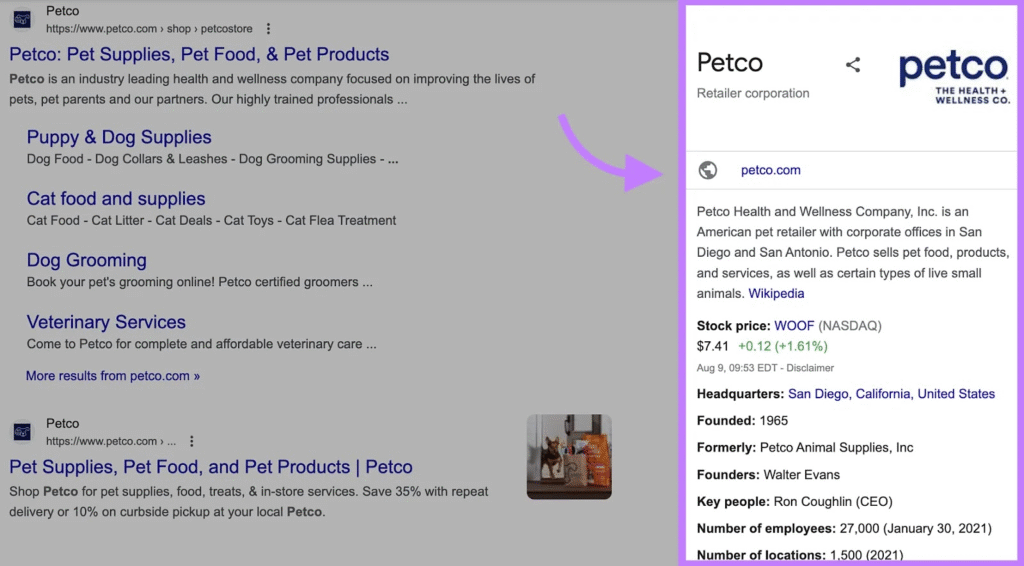
The advantage of the organization schema is that it gives users more information about your business and allows searchers to take action from the search results. This is a great way to stand out, and funnel a lead share of the traffic searching for your products/services online.
For example, a surgeon in Miami can embed an organization schema on their website to display important business details such as phone number, location, and opening hours directly in Google’s knowledge panel.
Potential patients searching for surgeons in Miami will know the best time to visit the clinic, get directions, or when to call, without the need to click through a website. This convenience increases the chances of converting searchers into walk-in customers.
For example, Zuri Plastic Surgery ranks for the keyword “Surgeon in Miami”

I used Google’s schema markup testing tool to verify the markups on this page and voila! It has four, including the Organization schema to highlight the key services the clinic offers, and contact information:
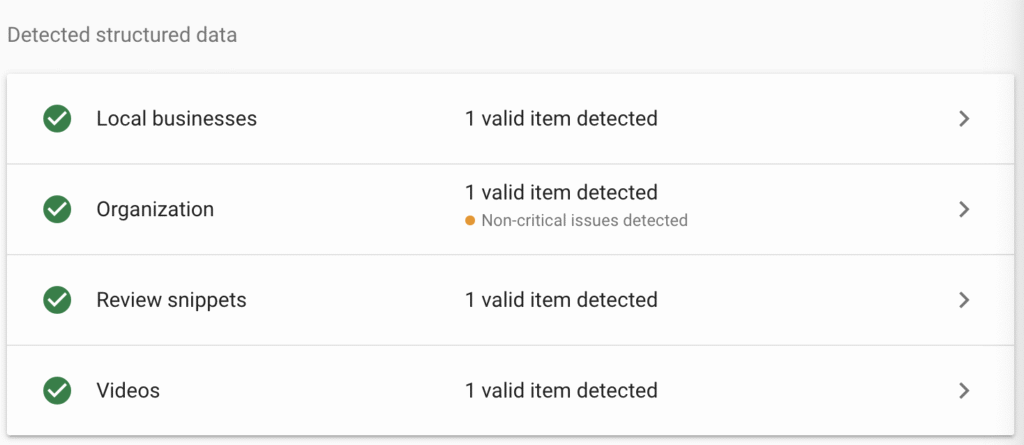
6. Product schema
Product schema is used to describe your business’s specific products.
It helps search engines understand the context and content of your products and match your product pages to relevant user queries. This is most useful for local businesses selling physical goods (think shoes, clothes, or electronics) in-store or through delivery.
There are two main types of product schema:
- Product snippets:

This can be on a product review page, informational listing, or comparison articles. This schema type allows you to markup details such as the pros and cons, product reviews, or editorial summaries.
Here’s an example of product snippet markup:

- Merchant listings:
The merchant listings schema is perfect for e-commerce websites. It gives you more fields to specify the product details such as price, stock availability, shipping details, and return policies. Google recommends using this schema for pages where customers can purchase products from you. This is how it looks:
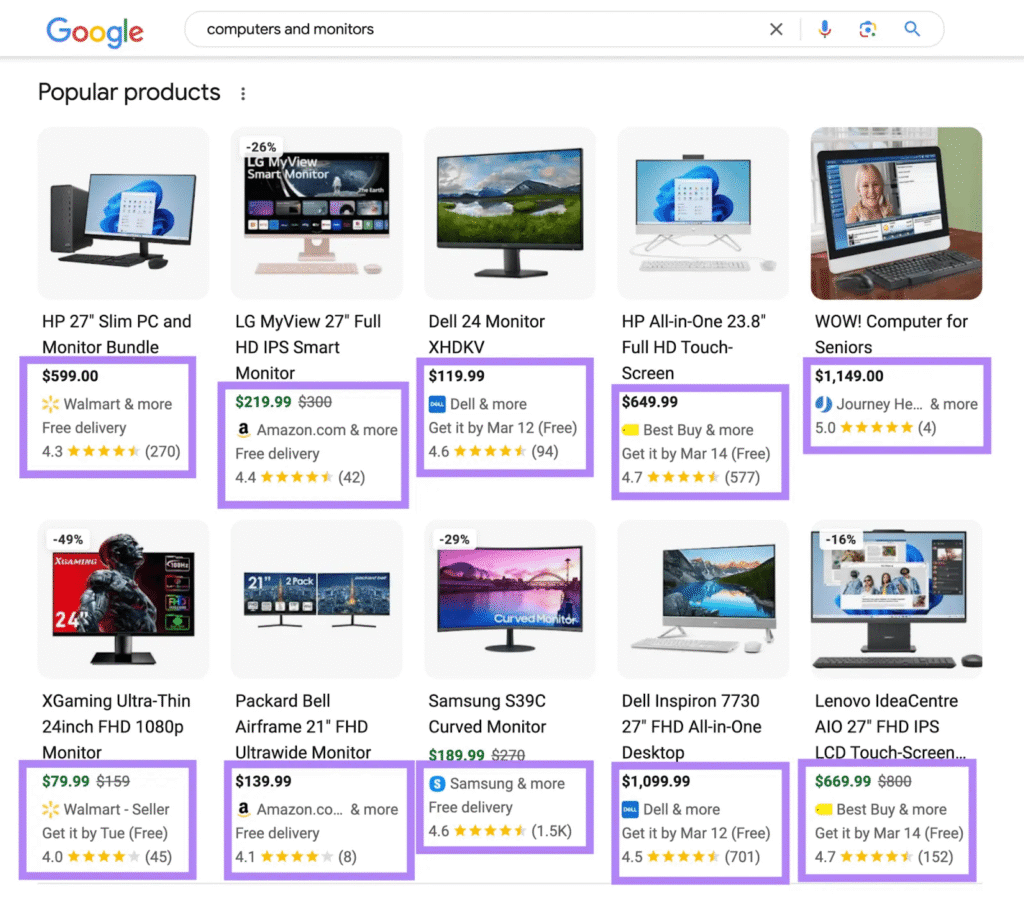
7. Breadcrumbs schema markup
If you own an enterprise ecommerce store, you need to add breadcrumb schema to your product pages, and here’s why:
Breadcrumb schema is a structured data markup that helps search engine bots and users understand your website’s hierarchy. It’s like a compass that guides them to the key pages on your website, and users can easily backtrack to parent categories or higher-level pages without getting lost.
If used correctly, breadcrumb schema can improve your listings in the search results (think rich snippets) by displaying a clean, clickable path instead of a long URL. This way, users can click on their preferred link in the breadcrumb trail instead of shuffling through multiple menus or hitting the back button multiple times.
See an example of Breadcrumb schema on the search results:

There are different types of breadcrumbs:
- Hierarchy-based schema:
Like the name suggests, this type of breadcrumb follows the hierarchy or structure of your website. It starts from a top-level category and trails to subcategories and pages beneath it.
For example, for an e-commerce shoe store, the breadcrumb for men’s sneakers will be: Home >> Men’s Shoes >> Sneakers. Here’s a solid representation from Nike:

- Attribute-based schema:
This describes filters or specific attributes the user chooses when navigating the website. This can be size, color, brand, or price range. It looks like this: Home >> Men Shoes >> Sneakers >> Color: Black >> Size: 11.
Now that we’ve explored the main types of schema markup for SEO, let’s get into a fun part:
How to Implement Schema Markup for Local SEO
There are different ways to add schema markup on your website to improve your local SEO performance. However, I’ll use Google’s structured data markup helper for this article. Here’s a step-by-step guide to get you started:
Step 1: Choose the Schema Markup Language and Format
The first step is to decide which format to use to add schema markup to your website. This differs for each search engine, but Google understands three main formats:
- JSON-LD: This is mainly recommended because it is easy to update and keeps the HTML clean. It’s a JavaScript-based format added within the <script> tags in the <head> or <body> of your website HTML code.
- Microdata: This is more complex to implement, and it embeds the structured data attributes directly into the HTML of your page.
- RDFa: This is similar to Microdata but is commonly used for advanced annotations.
Overall, I recommend using JSON-LD, especially if you have entry-level technical skills. It’s easier to read, understand, maintain, and modify without altering any part of your website. Also, Google prefers it.
Here’s an example of JSON-LD:
| <script type=”application/ld+json”> { “@context”: “https://schema.org”, “@type”: “person”, “name”: “Adam Heitzman”, “jobTitle”: “SEO professional”, “url”: “https://adamheitzman.com” } </script> |
Step 2: Choose the type of schema markup:
Once you’ve chosen the format, the next step is to select a schema type. Go to Google’s Structured Data Markup Helper and enter the URL you want to markup and the data type:
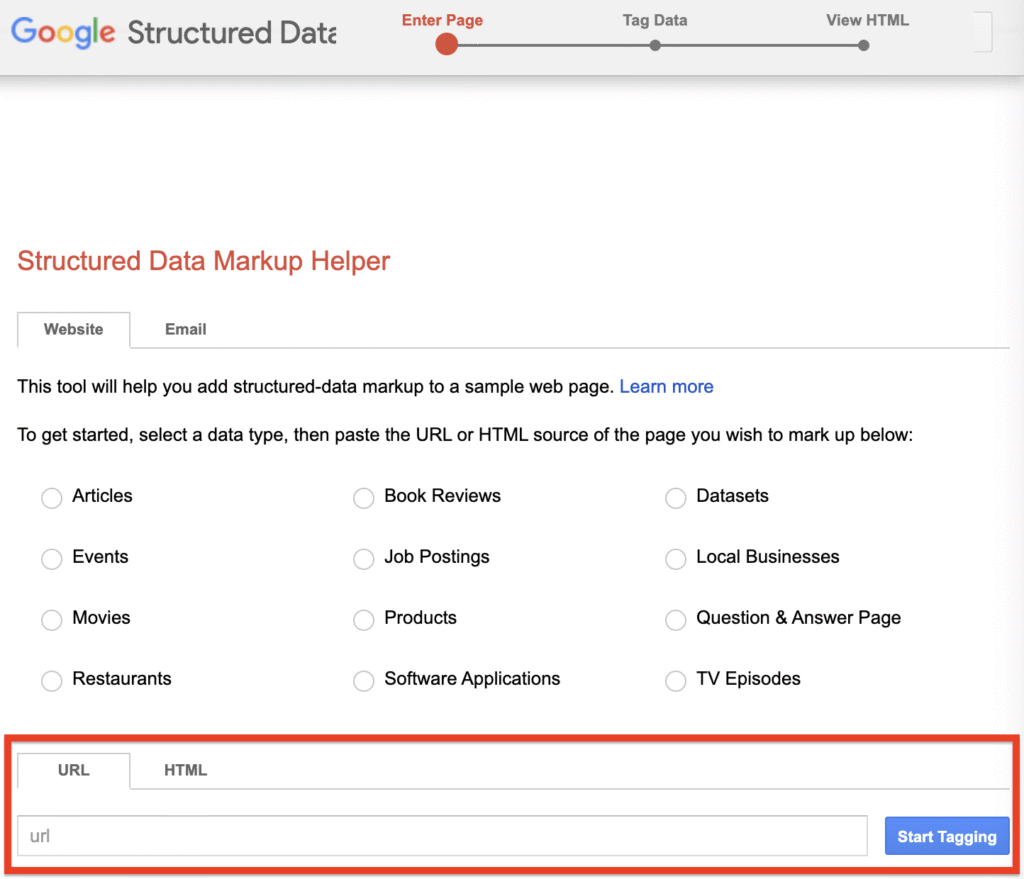
On the next page, your web page will be shown on the left and data items to markup on the right, like this:
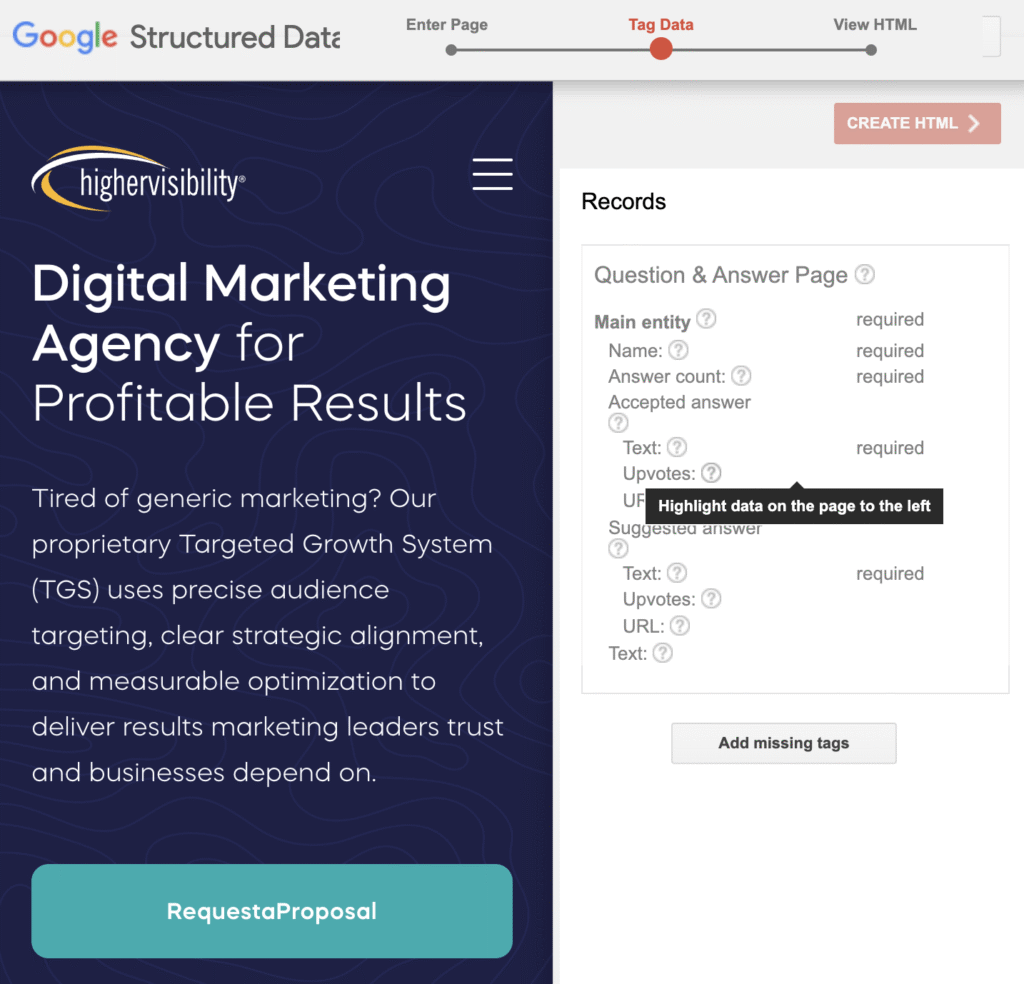
Highlight the section you want to markup. For example, for an article, I’ll markup the topic as “Title,” and the writer as “Author”
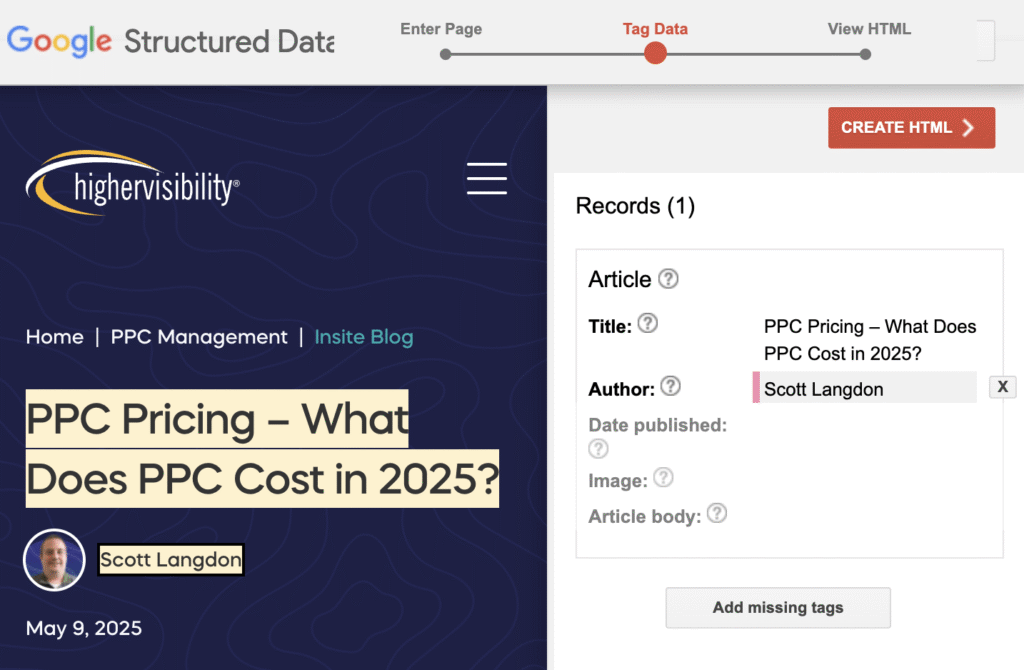
Step 3: Generate the HTML
Once you’ve marked up all critical aspects of the page, click “Create HTML” to generate the markup code:

The structured data will be displayed on your screen as JSON-LD markup. You can also switch it to “Microdata” from the drop-down menu:

Step 4: Add the Schema Markup to Your Website
Now that you have the markup code, copy and paste it into your HTML’s <head> section, depending on your CMS or website setup. If you’re using WordPress, you can add the schema using plugins such as Rank Math, SchemaPro, or Yoast SEO without editing the HTML code. Overall, ensure the code is placed in the relevant page.
Step 5: Test the Markup
Once you’ve successfully embedded the code into your website, test the markup using Google’s Rich Results Test tool to ensure it works. Simply paste the URL in the URL box as displayed on your screen:

It’ll show the type of schema used on the page:
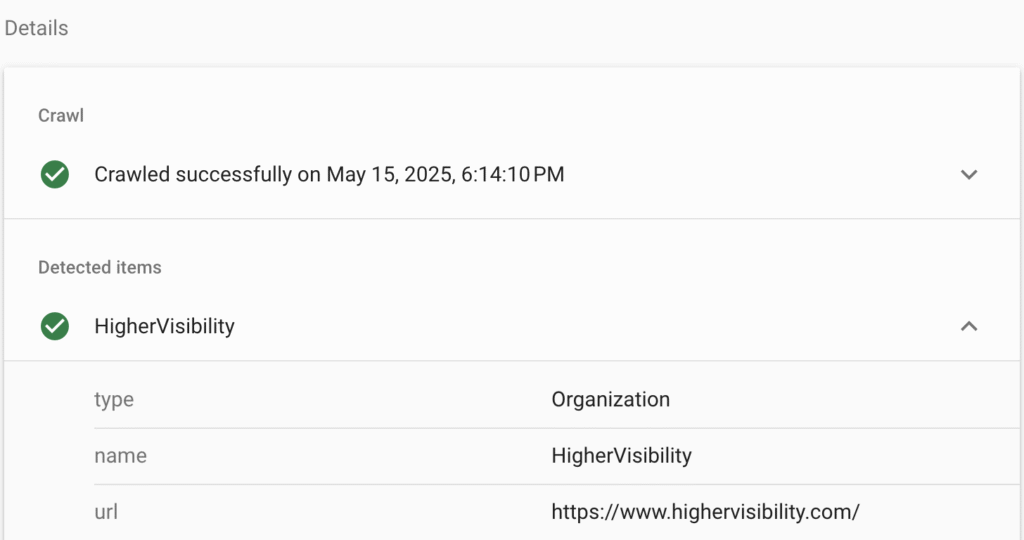
Local SEO Schema Markup Best Practices
Here are some best practices to keep in mind for your structured data:
- Implement the right schema markup on your website. For example, use LocalBusiness and organization schema for the homepage and service schema for service-specific pages.
- Use a schema markup that’s easy to implement and maintain. In most cases, JSON-LD works best for all schema types, especially if your primary search engine is Google.
- Only markup content that is visible on your web page. This ensures that the algorithm displays what users can see and interact with on your website.
- Ensure your schema details are accurate and consistent across all online listings, including your Google Business Profile, citation, and website. Inconsistency or accuracy can confuse the algorithm and can cause them to ignore or flag your listing.
- Consistently test your structured data after embedding it to make sure there are no errors.
- Prioritize pages that will be eligible for rich results. This includes product pages, reviews, articles, FAQ pages, etc.
Conclusion
Although Google’s John Mueller confirmed that schema markup isn’t a ranking factor, it remains a powerful tool to help you:
- Stand out in the search results.
- Acquire more search engine real estate.
- Increase conversion rate.
- Give users a quality search experience.
- Rank on LLMs and Google’s AI overviews.
With this guide, you can implement schema markup on relevant pages to bump up click-through-rate. However, if you need an expert’s eye to provide personalized recommendations, schedule a free consultation with any of our local SEO professionals.
